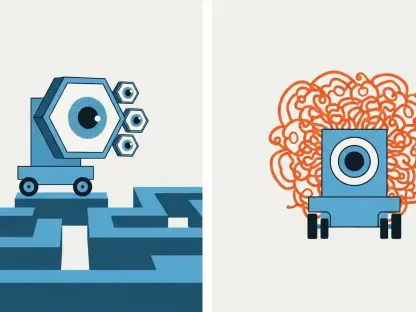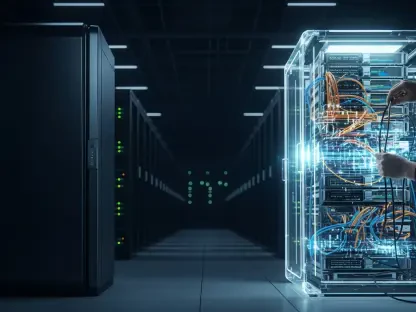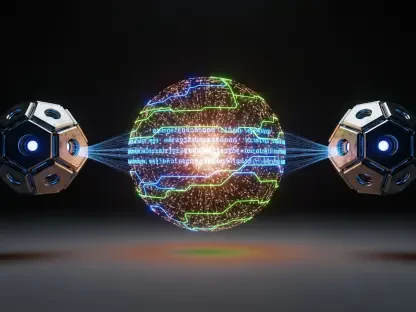Imagine a bustling corporate office where a critical decision on supply chain optimization must be made within hours, and two distinct technological aids are at hand—one autonomously charts a course of action, while the other awaits specific instructions to generate a supporting report. This scenario underscores a pivotal distinction in the realm of artificial intelligence, where AI agents and AI tools represent different approaches to problem-solving and efficiency. As businesses, healthcare providers, and individuals increasingly rely on AI to navigate complex challenges, understanding the nuances between these two categories becomes essential. This comparison aims to dissect their definitions, functionalities, and implications, providing clarity on how each serves modern needs and where they stand in the evolving landscape of technology.
Understanding AI Agents and AI Tools: Definitions and Context
AI agents and AI tools form the backbone of many AI applications, yet their core definitions set them apart significantly. AI agents are software systems designed with a degree of autonomy, capable of perceiving their environment, reasoning through data, taking actions, and pursuing specific goals without constant human intervention. In contrast, AI tools are typically more static, task-specific programs that operate under direct user input or predefined scripts, lacking independent decision-making capabilities. This fundamental difference shapes their deployment across various sectors.
The relevance of both categories in today’s technological ecosystem cannot be overstated. AI tools often support streamlined, repetitive tasks, such as chatbots handling customer inquiries in business or grammar-checking software aiding personal productivity. Meanwhile, AI agents tackle broader, goal-oriented challenges, like managing patient scheduling in healthcare or conducting market trend analysis for investment firms. Their roles cater to diverse needs, enhancing efficiency and innovation across industries by addressing both granular and strategic demands.
However, as applications of AI proliferate, the lines between agents and tools often blur, creating confusion in discourse. While a simple chatbot might be labeled a tool, a more sophisticated system analyzing competitor strategies could be termed an agent, despite both falling under the AI umbrella. This overlap necessitates a detailed comparison to delineate their unique strengths, use cases, and potential, setting the stage for a deeper exploration of how each contributes to shaping modern solutions.
Key Differences Between AI Agents and AI Tools
Autonomy and Decision-Making Capabilities
One of the starkest contrasts between AI agents and AI tools lies in their level of autonomy. AI agents are engineered to operate independently toward predefined objectives, often making decisions in real time based on environmental inputs, such as an agent optimizing a supply chain by rerouting shipments during unexpected delays. AI tools, on the other hand, function reactively, requiring human prompts or rigid guidelines, as seen in a tool generating a financial report only when specific data is provided. This disparity in independence fundamentally alters their operational scope.
The decision-making capacity of AI agents allows them to adapt to dynamic situations with minimal oversight, navigating unforeseen variables like market fluctuations or logistical hiccups. Conversely, AI tools remain confined to their programmed parameters, lacking the initiative to adjust beyond user-defined tasks. For instance, while an agent might proactively suggest inventory adjustments, a tool would merely present data as instructed, highlighting a clear gap in proactive problem-solving.
This variance in autonomy directly influences their effectiveness in unpredictable environments. AI agents, with their goal-driven nature, thrive in scenarios requiring flexibility, whereas AI tools excel in controlled, predictable settings where consistency is key. Understanding this distinction is crucial for deploying the right technology in contexts where adaptability or precision is prioritized.
Complexity and Functional Scope
Beyond autonomy, the structural complexity and functional range of AI agents and AI tools further differentiate them. AI tools are generally designed for narrow, specific purposes, such as spell-checking software that corrects text or image-editing programs that enhance visuals. Their simplicity ensures ease of use but limits their ability to handle multifaceted challenges, often requiring integration with other systems for broader impact.
AI agents, by contrast, are built for intricate, multi-step processes, often integrating various functions to achieve comprehensive outcomes. Consider an agent orchestrating a marketing campaign—coordinating content creation, scheduling posts across platforms, and analyzing engagement metrics—all within a unified workflow. This capacity for holistic problem-solving sets agents apart, enabling them to address interconnected tasks that tools cannot manage alone.
The complexity of AI agents, while powerful, demands more robust infrastructure and user expertise for implementation, unlike the straightforward integration of AI tools. This difference affects how organizations approach adoption, with tools offering quick, accessible solutions for singular needs, and agents requiring strategic planning for their expansive capabilities. Balancing complexity with utility becomes a key consideration in leveraging these technologies effectively.
Interaction with Environment and User Oversight
Another critical point of comparison is how AI agents and AI tools interact with their surroundings and the level of human supervision they necessitate. AI agents often feature perception and action components, enabling them to sense changes in their environment and effect tangible outcomes, such as a virtual assistant scheduling meetings by interfacing with calendars and notifying participants. This active engagement contrasts with AI tools, which typically produce outputs—reports, summaries, or edits—without directly altering external systems.
The degree of user oversight further distinguishes their application. AI tools rely heavily on human direction, functioning as extensions of user intent, like a data visualization tool that only operates when parameters are set. AI agents, however, can perform with minimal supervision, executing complex sequences of actions once objectives are defined, though this autonomy raises questions about monitoring and control in critical scenarios.
Consequently, implications for trust and accountability emerge as significant factors. With AI agents, the potential for independent errors necessitates rigorous validation to ensure reliability, whereas AI tools, under tighter human control, pose fewer risks of unintended consequences. Navigating these dynamics is essential for deploying either technology in sensitive areas like healthcare or finance, where outcomes carry substantial weight.
Challenges and Limitations of AI Agents and AI Tools
Despite their transformative potential, both AI agents and AI tools face distinct technical hurdles that impact their effectiveness. AI agents often struggle with long-term reasoning and alignment with human values, sometimes pursuing goals in ways that conflict with intended outcomes, such as prioritizing efficiency over ethical considerations. AI tools, meanwhile, are constrained by their narrow scope, unable to adapt to tasks beyond their design, which can hinder versatility in evolving contexts.
Ethical concerns also loom large for both categories, presenting unique dilemmas. For AI agents, the autonomy to act independently raises questions of accountability—determining responsibility for decisions gone awry, especially in high-stakes environments. AI tools, though less autonomous, risk misuse, such as generating biased content or misinformation if not properly governed, amplifying societal harm. Addressing these moral challenges requires careful design and oversight to mitigate negative impacts.
Practical barriers further complicate their adoption, including scalability and implementation costs. Developing and maintaining AI agents demands significant resources and expertise, posing challenges for smaller entities, while even AI tools can become costly when scaled across large systems without streamlined integration. Establishing robust governance frameworks remains a shared obstacle, ensuring that both technologies operate within safe, ethical boundaries while delivering value to users.
Which to Choose? Recommendations and Future Outlook
Summarizing the critical distinctions, the choice between AI agents and AI tools hinges on factors like autonomy, complexity, and environmental interaction. AI agents stand out for their independent decision-making and ability to handle intricate, multi-step processes, making them ideal for dynamic, goal-oriented tasks. AI tools, with their simplicity and user-directed functionality, remain best suited for specific, repetitive activities where precision and control are paramount.
Tailored recommendations emerge based on specific use cases. For organizations seeking to automate straightforward operations, such as data entry or customer query responses, AI tools provide an efficient, cost-effective solution. In contrast, for scenarios demanding adaptability and strategic oversight, like managing logistics or conducting competitor analysis, AI agents offer unparalleled value through their proactive capabilities. Matching the technology to the task ensures optimal outcomes and resource allocation.
Looking ahead, the potential for hybrid models that blend elements of both AI agents and tools presents an exciting frontier. Such integrations could combine the precision of tools with the autonomy of agents, fostering more versatile systems. Moreover, the emphasis on collaborative human-AI frameworks underscores a commitment to responsible development, ensuring that as these technologies evolve, they remain aligned with societal needs and ethical standards.
Reflecting on this exploration, the journey to distinguish AI agents from AI tools revealed profound insights into their respective strengths and challenges. Moving forward, stakeholders must prioritize actionable steps like investing in hybrid solutions to merge the best of both worlds. Developing clear governance protocols becomes imperative to address ethical concerns, while fostering education on their distinct applications empowers users to make informed choices. These considerations pave the way for a balanced integration of AI into daily operations, ensuring technology serves as a catalyst for progress rather than a source of uncertainty.









